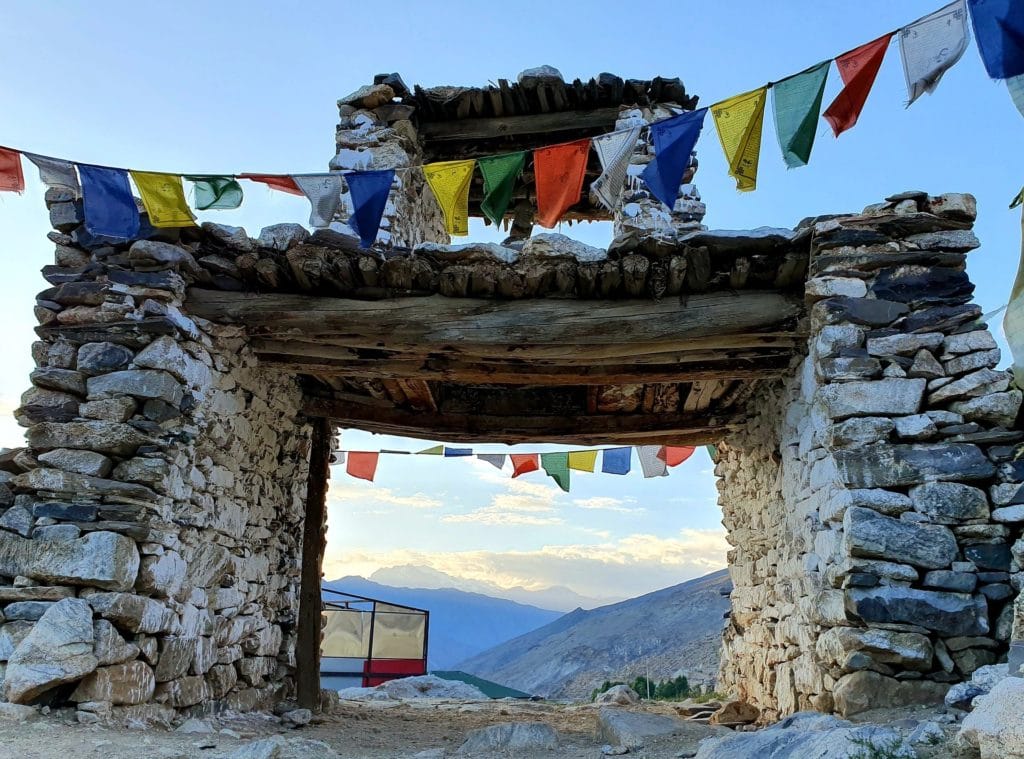Oxfordshire Mind’s Physical Activity Team are offering a weekly ‘virtual walk’ this week the team are visiting the roof of the world; the Himalayas.
Hello everyone. Today we are travelling to the very roof of the world; the Himalayas. For many people, this is a sacred place, as is shown by the monasteries and other holy sites that dot its high valleys. Others are drawn to the region that contains the highest mountains on earth simply for the challenge it represents – just to say they have stood here where few other people have ventured. Whichever tendency you lean towards , this landscape of rocky precipices and lofty mountaintops is certainly a very special place, inspiring awe and wonder like nowhere else on the planet. So let’s go on a pilgrimage of sorts together, and see if we can find a little peace and clarity in the rarefied mountain air.
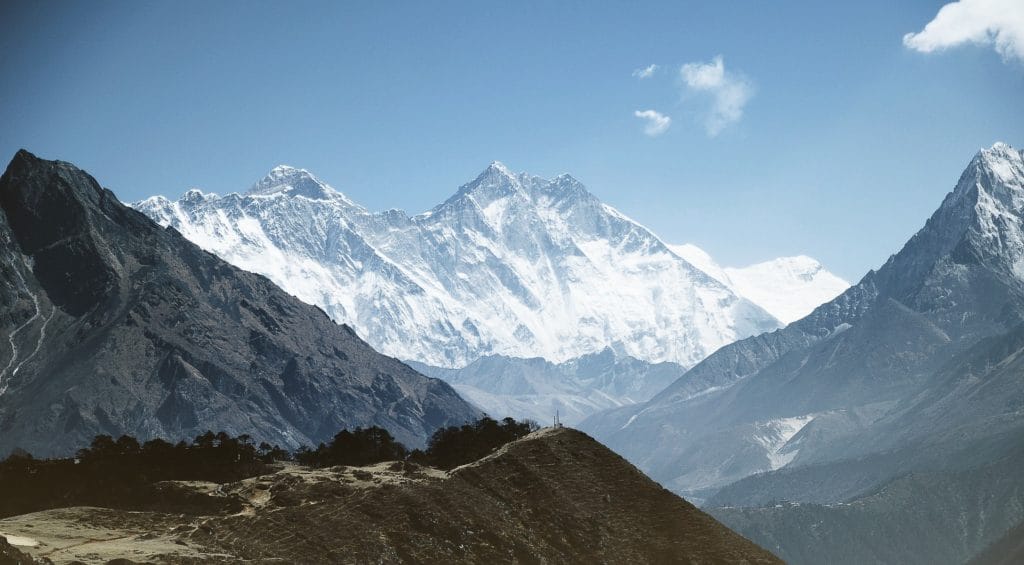
Our trail starts from a little Nepali village in the valley floor. The high peaks rear above our heads as we adjust the straps of our daypacks and take in the scene. Himalaya comes from the Sanskrit meaning ‘abode of snow’, and you can see why- all of the peaks around us are held fast in a deep layer of ice. Don’t worry, we’re not attempting to scale any of those, but are making our way up to a monastery high up in the pass there, which will give us some fantastic views both of the peaks and of the valley where we’re standing now.
We’re accompanied by two local guides, Nima, a local woman who has been navigating these highlands for years, and Pemba, Nima’s young nephew. It’s Pemba’s first official guiding trip, and he’s very excited, already pointing out landmarks and telling stories about them, even though we haven’t left the village. Nima grumbles and rolls her eyes at his enthusiasm, but you can see she’s secretly proud of him- occasionally you’ll catch her smiling fondly at him when she’s certain he’s not looking.
We begin our walk. The village is only a few dwellings, a shop, a primary school and the local ‘tea house’ where we’ve been staying for the night. We remember that place fondly- particularly the excellent dinner and breakfast. Nepali food is hearty and nourishing, as it needs to be –and the heaping plates of chow mein noodles, dal bhat (lentil soup with rice), and momos (fried dumplings filled with delicious spiced filling), are still fresh in our mind. Not to mention, of course, the many, many steaming cups of sweet black tea to fortify us before a long day of strenuous trekking.
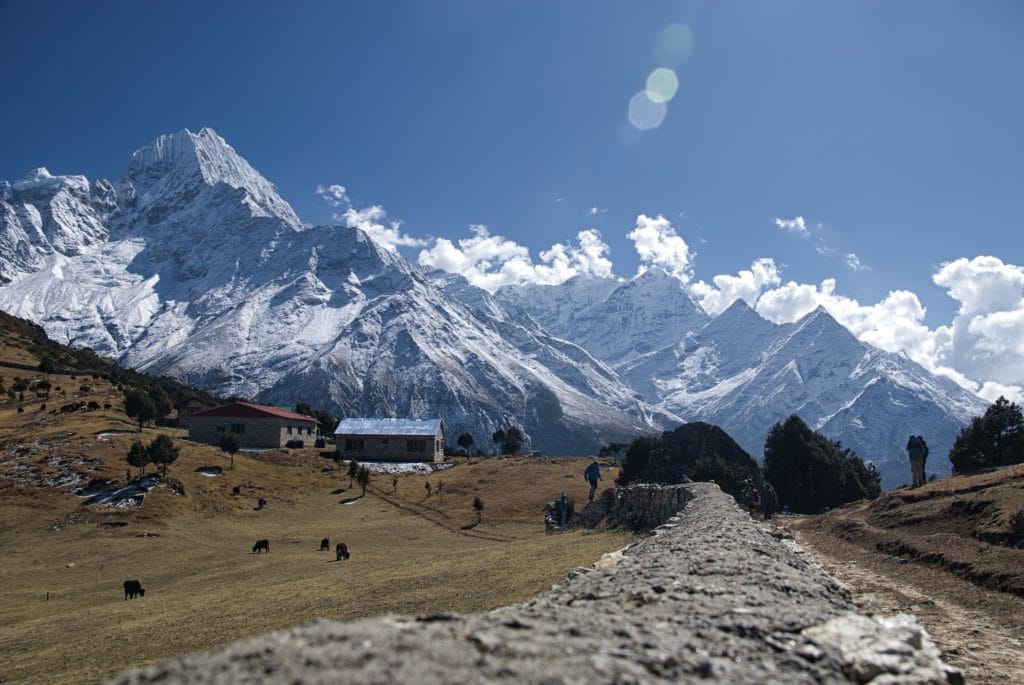
It looks like we are going to be delayed a little as we leave the village, though, as up ahead you can spot the Himalayan equivalent of a traffic jam- a stray yak wandering across our path. If you’ve never seen one before, a yak is like a cow that someone has thrown a massive shaggy blanket over. Its fur reaches all the way down to its hooves, and it almost looks like it could sweep the ground behind it as it walked. It has enormous horns which curve out on either side of its face and its own little mountain peak in the middle of its shoulders. As it turns its head towards us, a little bit of its long fur falls between its eyes like a floppy fringe, giving it the look of a singer from a boyband. Here in Nepal, almost everything is produced by yaks – their wool is used to make clothing, temples are lit by yak butter lamps, and there’s even such a thing as tea made with yak butter. So be sure to show them the proper respect when you see one. After a moment it turns and lumbers away again, with a soft tinkling sound from the bell around its neck, and we can continue on our way.
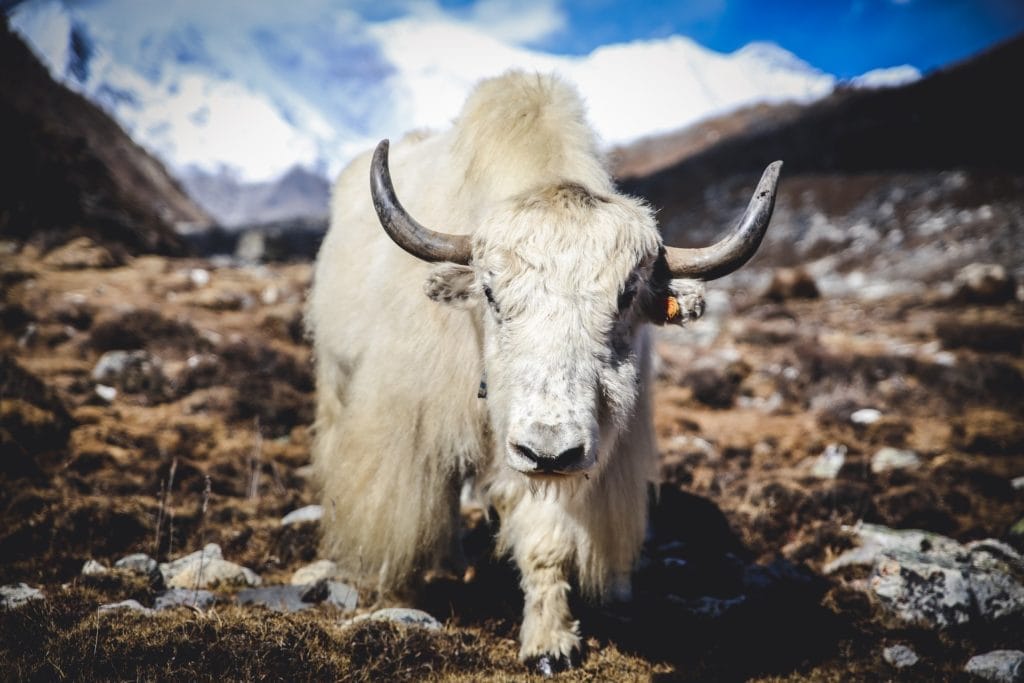
The trail is lined by long ropes which hold dozens and dozens of pieces of cloth, fluttering in the breeze. These are prayer flags. Printed with mantras and depictions of sacred animals, it is believed that when the wind blows through them, it spreads goodwill and compassion out into the world. You will see hundreds of these brightly-coloured cloths as we make our way through the mountains. As we pass each one, spare a thought for the kind person who tied them up there, for no other reason than to put a little more goodness into the world.
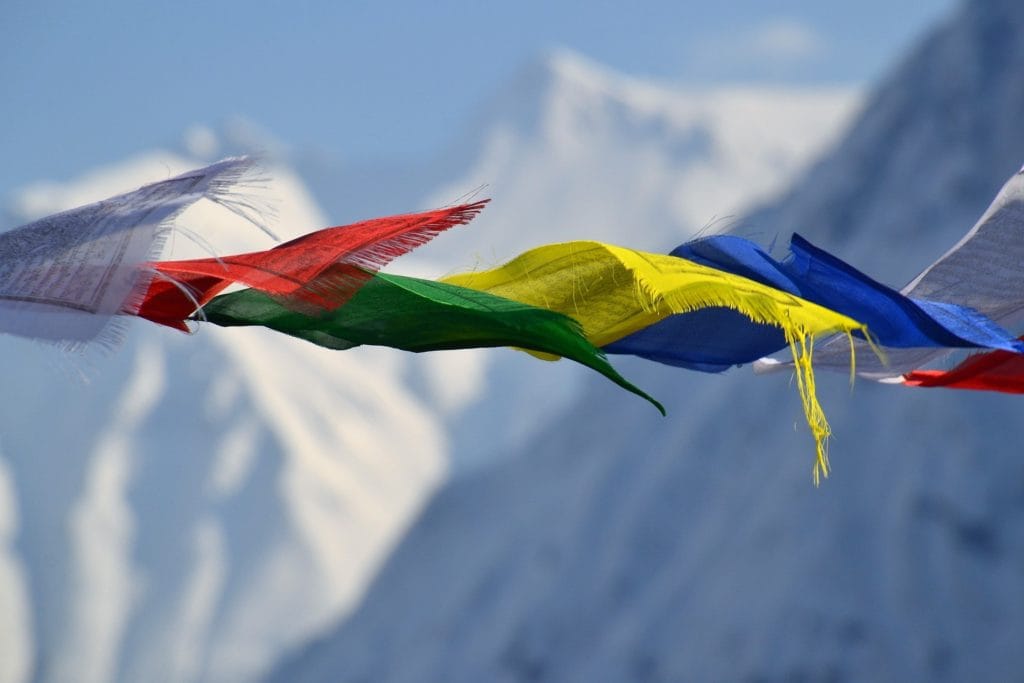
Soon we start to climb upwards. The lower slopes of the mountains are thickly forested, bringing with them a fresh scent of pine. All sorts of fascinating wildlife shelters in the deep needle-strewn shadows. The red panda is native to this part of the world, and perhaps, if we’re very, very lucky, we’ll catch a glimpse of it out of the corner of our eye, and turn around just in time spot a flash of bright red stripy tail disappearing deeper into the trees.
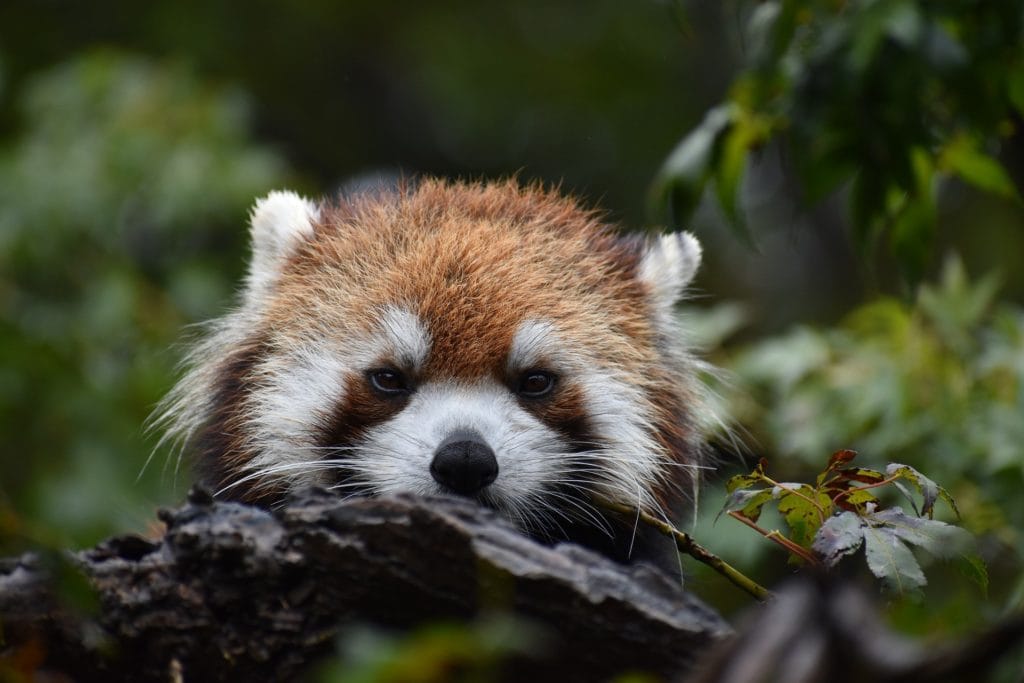
We hear the sound of rushing water long before we reach the point where the ground suddenly falls away into a wide gorge over a river. The only way across is the narrow, wobbly rope bridge. We stop and stare at it apprehensively, but Nima and Pemba carry on walking, completely unconcerned. I suppose there’s nothing else for it but to follow them. After you, then. The bridge sways alarmingly from side to side as we walk along it. Though it’s perhaps better to keep your eyes firmly fixed on the other side, it’s impossible not to look down to the white water flowing over the rocks below. Some of the greatest rivers in the world have their sources in these mountains, and perhaps this torrent joins up with a hundred other streams and flows into the Ganges or the Brahmaputra. If we dropped a stone in there, it could be carried all the way out to the vast delta in the Bay of Bengal. What a journey that would be. Finally our grasping hands reach the end of the rope and our feet find firm ground on the other side. Phew. Made it. Our guides have already raced on ahead- we’d better jog a little to catch up with them.
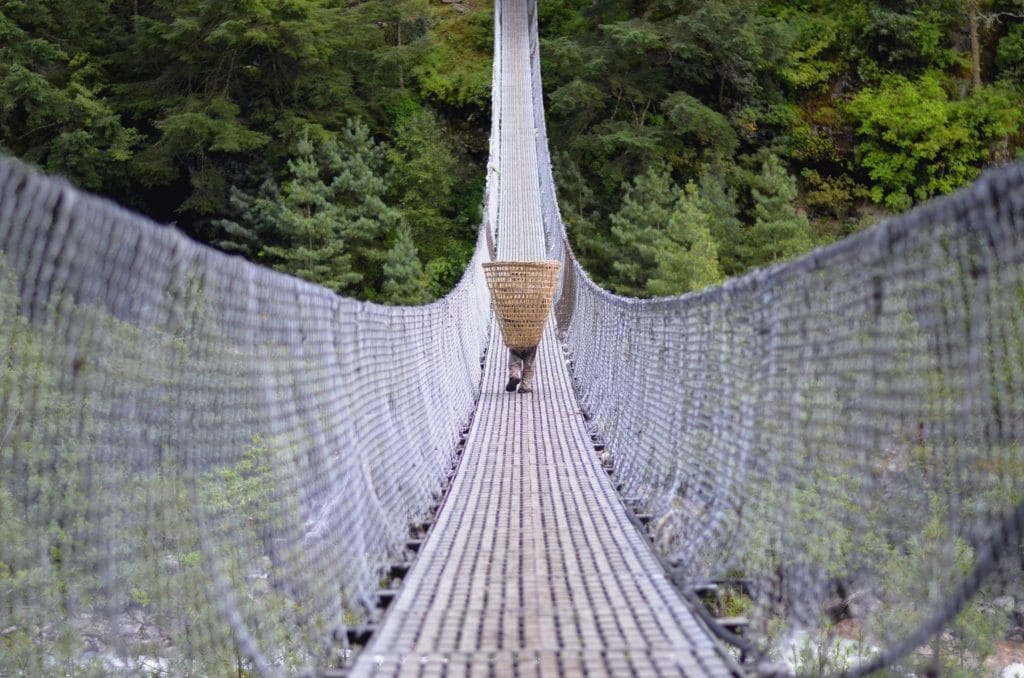
We keep on trekking for quite some time, climbing higher and higher until we break through the treeline. The upper parts of the Himalayas are a lunar landscape of bare rock, bleakly beautiful in its way, but it’s hard to concentrate on anything but the climb as we ascend the final steep slope up to the top of the pass. Conversation falls away as our calves begin to ache and our breath comes in short, sharp bursts. The only sound is Pemba humming softly to himself, lost in his own private world. There’s something cleansing about this level of intense exertion. All your present worries, future plans and past memories seem to melt away, and there’s nothing but you and the path ahead of you.
“All your present worries, future plans and past memories seem to melt away, and there’s nothing but you and the path ahead of you.”
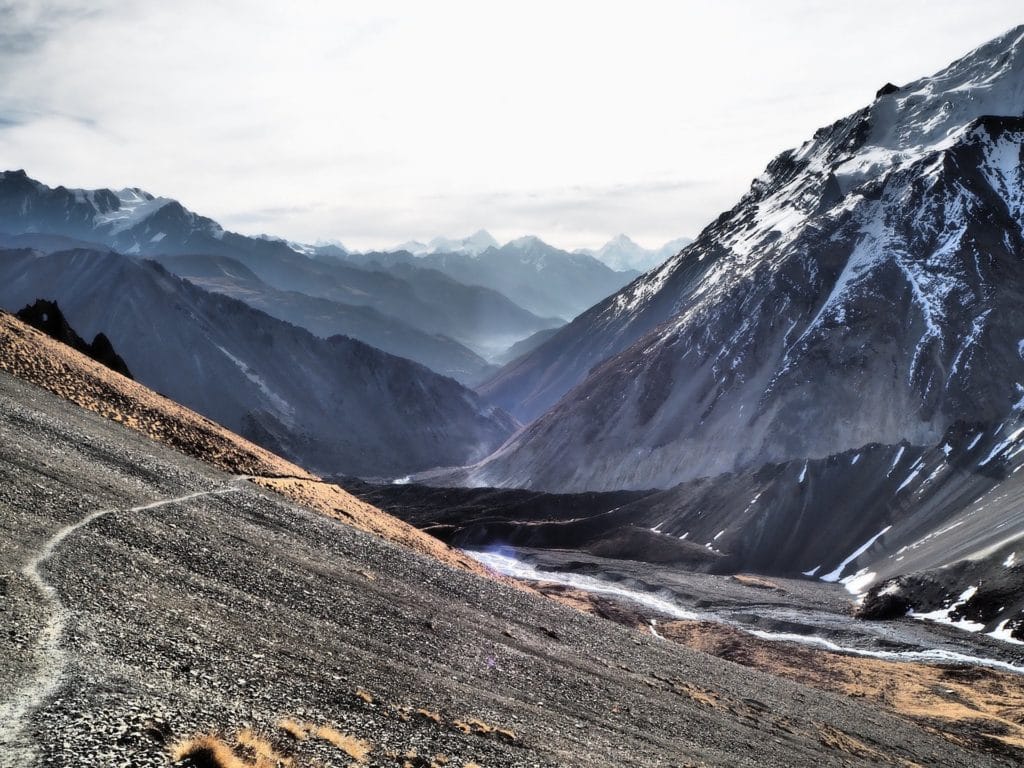
Finally here we are at our destination. The monastery perches precariously on its rocky outcrop, at the highest point of the pass. It’s a simple building, decorated only by more long lines of prayer flags and brightly painted borders around the doorways. From inside the monastery you can hear the chime of bells and the slow rhythmic drone of the monks chanting inside. Turn around and look back the way you came. This is what has made it all worth your while- the valley spread out before your feet, the sunlight reflecting off the snow-capped peaks, and the soaring feeling, like you are flying without your feet having left the ground. I don’t think anything else can top this, quite literally, so it seems a good place to end our walk this week. See you next week for another walk!
